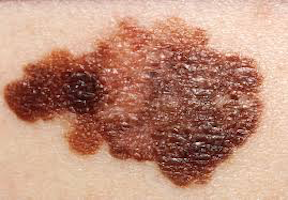Check your body before you hit the summer season and expose yourself to the sun. Remember, melanoma is a young person’s disease. Melanoma is not the most common form of skin cancer, but it is the deadliest. One in 50 Americans will develop malignant melanoma and around 10,000 people will die from it this year. And it’s not just a disease that affects the elderly. In fact, melanoma is the most common form of skin cancer in young adults between the ages of 25 and 29. And it grows incredibly quickly. You need to share this.
|
|
|||||||||||||||||||||||||||||||||||||||||||||||||
|
|||||||||||||||||||||||||||||||||||||||||||||||||
The good news is that a cure may be coming down the pike. Researchers at a Utah cancer institute say they are hot on the trail to a cure for melanoma, the deadliest form of skin cancer. Scientists at the Huntsman Cancer Institute are using mutated herpes viruses and injecting them directly into melanoma tumors to attack cancer cells. The treatment — a form of immunotherapy — essentially boosts the patient’s own immune defenses to fight cancer, using the herpes virus (which has been engineered to be benign) as a kind of Trojan-horse therapy. To date, 25 percent of patients who have undergone the therapy have remained cancer free.
 Remember, the self-reliant person doesn’t tempt fate. Either use sunscreen or if you don’t like the idea of those chemicals, dress in light clothes, wear a hat and sunglasses, and watch out you don’t burn your hands, ankles and feet.
Remember, the self-reliant person doesn’t tempt fate. Either use sunscreen or if you don’t like the idea of those chemicals, dress in light clothes, wear a hat and sunglasses, and watch out you don’t burn your hands, ankles and feet.





